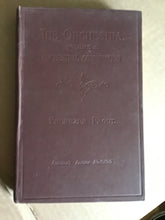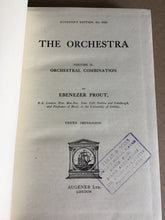Item Condition: Collectible; Very Good
10th impression 1899
WITH the present volume the subject of Instrumentation is
completed.
volume of this work, no lengthy remarks will be needful here.
After what was said in the preface to the frst
The first thing to be said is, that here, more than in any other
volume of this series, it has been necessary to teach by example.
It will be seen, therefore, that the quotations fromn orchestra
scores occupy a far larger portion of the space than the letter
press. Merely to talk about combinations of instruments, without
giving actual illustrations, would have been absolutely useless to
the student. As in the preceding volume, the passages selected
have been taken from works of the most varied style, and of
different periods, from the time of Haydn down to the present
day. With the exception of two passages by Bach and Handel
in Chapter VII, illustrəting the employment of the organ, 10
examples have been quoted anterior to Haydn ; for it is with this
composer that the modern science of orchestration may be said
to begin. Though a few wel known extracts will be found among
the illustrations, special effort has been made to avoid, as far as
possble, hackneyed quotations, and the author believes that the
very large majority of the examples given will be new to the
greater number of his readers.
With a view of systematizing the teaching as far as possible,
the stringed orchestra is first dealt with ; this subject is com-
paratively so simple that its treatment presented but little
In the following chapter, the management of the
wind instruments-a much more complicated subject--is spoken
of. To do anything like justice to this question, a large number
dificulty.
of illustrations were absolutely necessary.
Students are so apt to imagine that, in order to produce any
aaequate results, it is necessary to use a large number of instru-
ments, that it was thought advisable to give a chapter on tne
treatment of the small orchestra,' in order to show how much…




